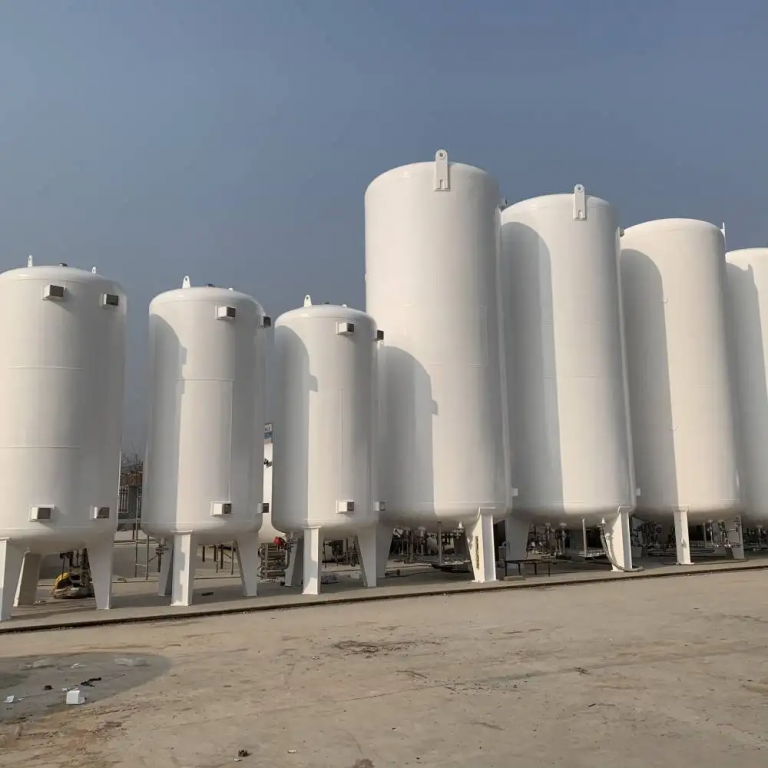1.Maintain sufficient spare liquid chlorine storage tanks to avoid transferring liquid chlorine during emergency conditions;
2.Install emergency containment berms to collect and treat harmful substances generated during liquid chlorine disposal in emergency situations;
3.Each chlorine storage tank shall be equipped with a safety valve or rupture disc, with discharge lines connected to caustic soda absorption equipment;
4.Each chlorine storage tank shall have temperature and pressure display devices, with data transmitted remotely to the DCS central control system for real-time monitoring;
5.Each chlorine storage tank is equipped with dual-path level gauges, with data transmitted remotely to the DCS central control system for real-time monitoring;
6.All valves connecting chlorine storage tanks and pipelines must be chlorine-specific pneumatic automatic valves, with dual-valve configurations implemented to prevent valve failure or loss of control;
7.All liquid chlorine storage tanks must be equipped with lightning protection and static dissipation devices in accordance with standards to prevent accidents;
8.All liquid chlorine storage tanks must have effective insulation measures to prevent liquid chlorine from vaporizing and causing system pressure increases;
9.All liquid chlorine storage tanks must be equipped with dual-channel ladders and platform guardrails in accordance with standards to prevent falls from heights;
10.The liquid chlorine tank farm must be equipped with an alkaline water spray system. In the event of a leak, this creates an alkaline mist curtain to dilute chlorine gas and reduce its concentration;
11.The liquid chlorine tank farm must be equipped with a negative pressure suction system. In the event of a leak, this system uses negative pressure to collect leaked gas into absorption equipment;
12.The liquid chlorine storage tank area must install infrared anti-theft systems per public security requirements to prevent criminal sabotage incidents;
13.The liquid chlorine storage tank area must install video surveillance equipment connected to government security department monitoring networks;
14.The liquid chlorine storage tank area must install on-site alarm systems with signals transmitted to the DCS central control system for real-time monitoring;
15.The liquid chlorine storage tank area shall be equipped with sufficient fire hydrants and fire extinguishers to prevent fires.
16.The liquid chlorine storage tank area shall be equipped with sufficient chlorine gas extinguishers to neutralize and extinguish leaked chlorine gas.
17.The liquid chlorine storage tank area shall display warning signs, occupational disease information boards, safety warning signs, and hazardous material warning notices to constantly highlight the critical nature of this zone;
18.A red warning line must be established around the perimeter of the liquid chlorine storage tank area, strictly prohibiting unauthorized personnel from entering;
19.Liquid chlorine storage tank areas must be equipped with sufficient emergency response equipment, including air respirators, chemical protective suits, leak-sealing tools, and emergency medical supplies, to ensure readiness for accident response at all times;
20.Comprehensive inspections of all liquid chlorine storage tanks must be conducted every three years to prevent equipment aging;
21.In addition to provincial-level filing requirements, the liquid chlorine storage tank area must undergo a status assessment every three years;
22.Enterprises must develop a major hazard source management plan for the liquid chlorine storage tank area, file it with municipal authorities, and conduct at least one emergency drill and two on-site response drills annually.



